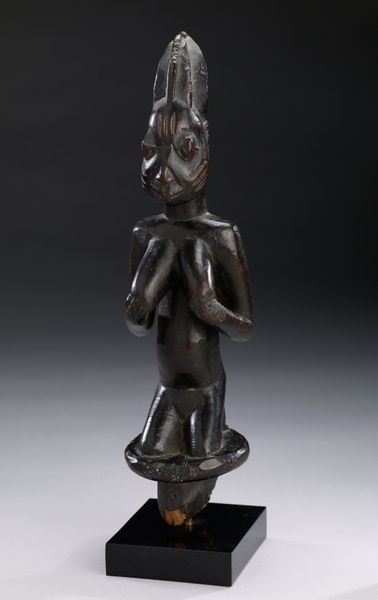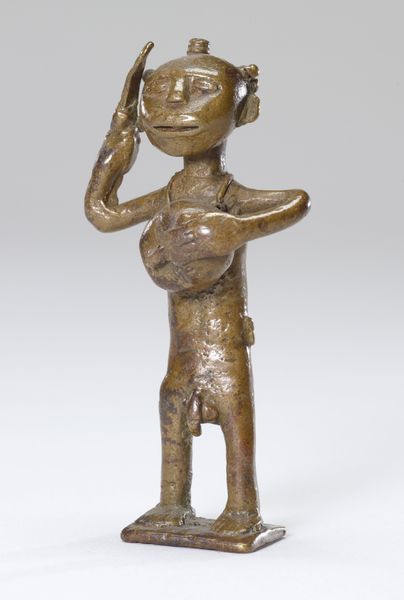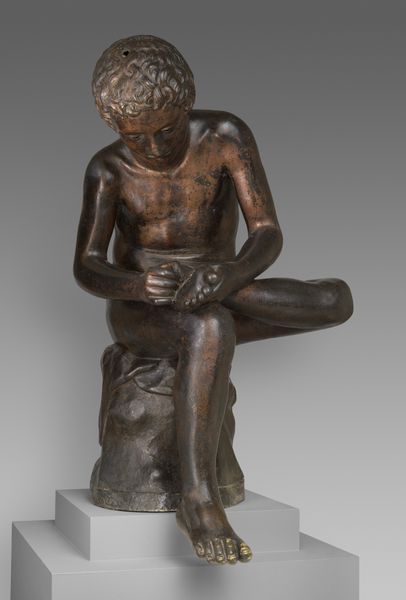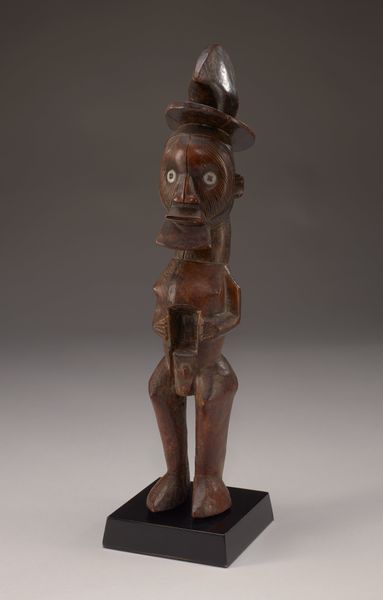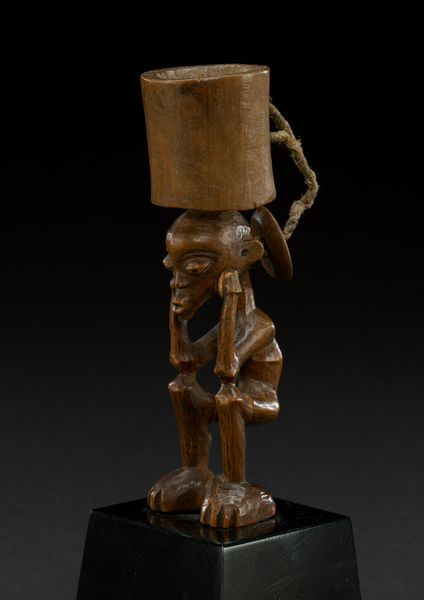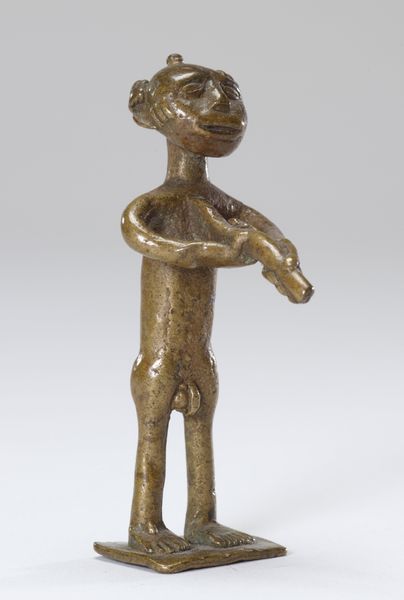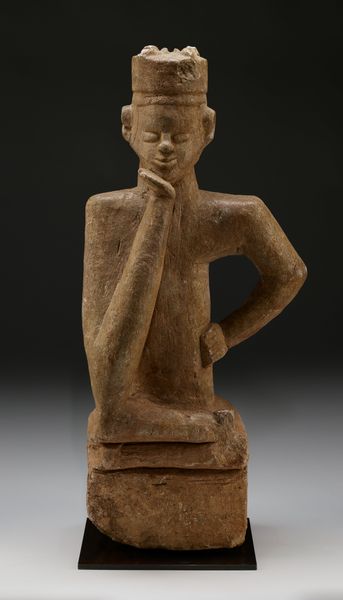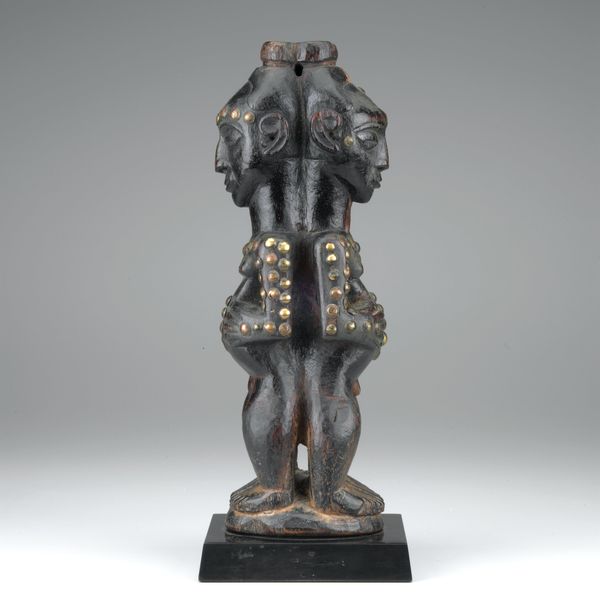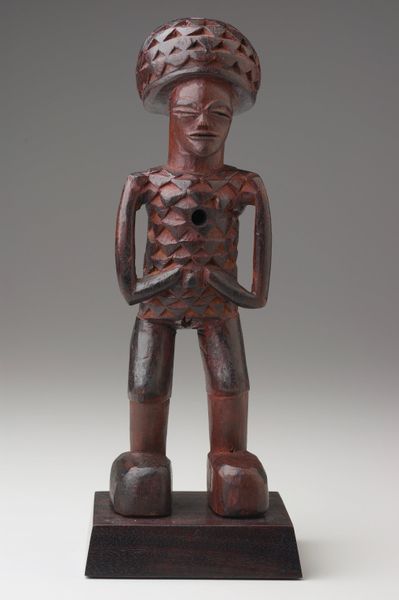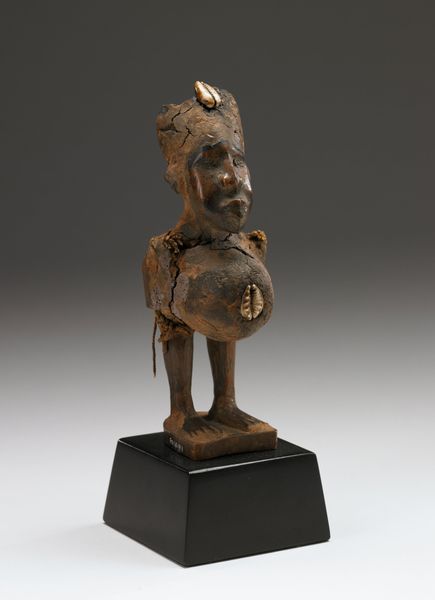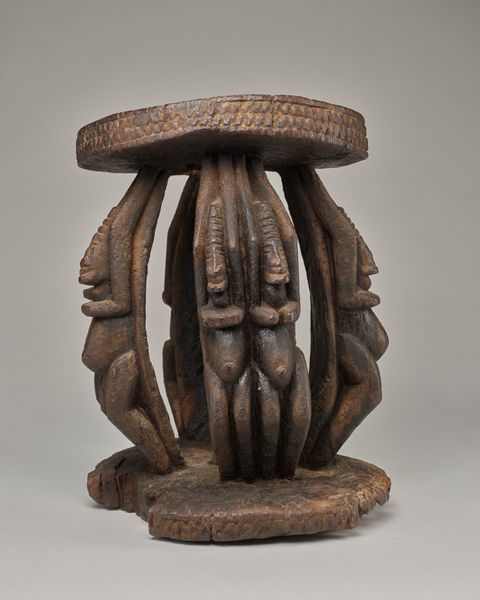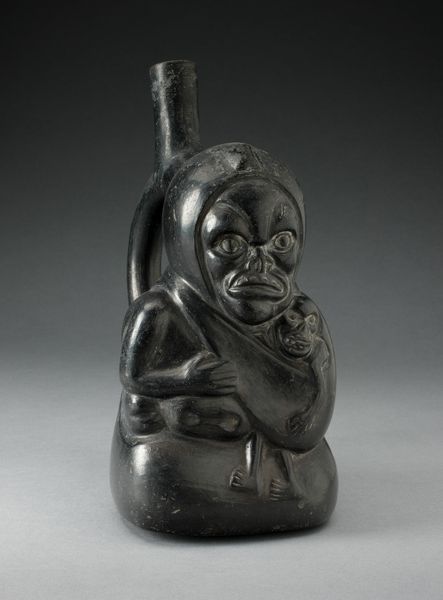
Royal Seat (Lupona): Female Caryatid 1800 - 1897
0:00
0:00
carving, sculpture, wood
#
portrait
#
carving
#
sculpture
#
figuration
#
sculpture
#
wood
Dimensions: H. 24 × W. 11 × D. 11 in. (61 × 27.9 × 27.9 cm)
Copyright: Public Domain
Curator: Here we have "Royal Seat (Lupona): Female Caryatid," likely carved sometime between 1800 and 1897. It is attributed to the Buli Master, possibly Ngongo ya Chintu, of the Hemba people. Editor: My goodness, she's got presence. Such stillness and strength radiating from this small wooden form. A world-bearer, you know? Curator: Precisely. Carved from wood, she acts as a caryatid, supporting a bowl-like structure on her head. The posture, the flexed arms... it’s less about effortless grace and more about visible effort, a testament to the labor involved, not just for her, but also the craftsman. Editor: Labor is right. It feels raw, you know? You can practically smell the wood shavings. There’s such a weightiness suggested, not just physical but also the symbolic weight of her role, which really pulls at me. That abdomen especially. It looks scarred and decorated. Curator: Ah, you're picking up on the details. The abdomen displays scarification patterns and a protruding navel— likely signaling fertility, a visible representation of power and continuity within Hemba society. Each scar tells a story. Editor: Each ring also echoes in the seat's base—as above, so below. The craftsmanship clearly denotes prestige and power, I love how form meets function, no matter what one rests on it. It makes you consider your own load, both literal and the metaphorical ones. Curator: Yes, and to emphasize, this wasn't just *any* seat; it held importance in conferring power. It served a socio-political function—connecting to ancestor veneration in governance. We often consider function when viewing it from our lens of "high art." Editor: High art, low art – seems academic now. All the carving, the material consideration…there’s an inherent power embedded. The seat transforms the sitter, or should I say *enthrones* them. You practically hear whispers in the wood... imagine. Curator: Exactly. And that whispering, that sensory engagement is entirely deliberate. By examining production, labor, materiality we get a step closer. It also challenges what is "beautiful," outside of courtly sanctioned, academic painting, Editor: Beautiful. Grueling. Powerful. This caryatid evokes a feeling more than an academic "definition." Curator: Indeed, it does a wonderful job of embodying so much materially, doesn’t it? Editor: It absolutely does, a testament to silent strength and unseen stories embedded into the wood itself.
Comments
No comments
Be the first to comment and join the conversation on the ultimate creative platform.
